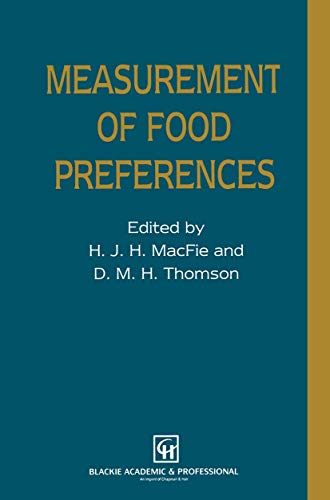Articoli correlati a Measurement of Food Preferences

Le informazioni nella sezione "Riassunto" possono far riferimento a edizioni diverse di questo titolo.
Le informazioni nella sezione "Su questo libro" possono far riferimento a edizioni diverse di questo titolo.
- EditoreSpringer Nature
- Data di pubblicazione2012
- ISBN 10 1461359082
- ISBN 13 9781461359081
- RilegaturaCopertina flessibile
- Numero di pagine316
- RedattoreMacfie Halliday
Compra nuovo
Scopri di più su questo articolo
Spese di spedizione:
GRATIS
In U.S.A.
I migliori risultati di ricerca su AbeBooks
Measurement of Food Preferences [Paperback ]
Descrizione libro Soft Cover. Condizione: new. Codice articolo 9781461359081
Measurement of Food Preferences
Descrizione libro Condizione: New. Codice articolo ABLIING23Mar2716030032588
Measurement of Food Preferences
Print on DemandDescrizione libro Condizione: New. PRINT ON DEMAND Book; New; Fast Shipping from the UK. No. book. Codice articolo ria9781461359081_lsuk
Measurement of Food Preferences
Descrizione libro Taschenbuch. Condizione: Neu. This item is printed on demand - it takes 3-4 days longer - Neuware -This book provides comprehensive coverage of the numerous methods used to characterise food preference. It brings together, for the first time, the broad range of methodologies that are brought to bear on food choice and preference. Preference is not measured in a sensory laboratory using a trained panel - it is measured using consumers by means of product tests in laboratories, central locations, in canteens and at home, by questionnaires and in focus groups. Similarly, food preference is not a direct function of sensory preference - it is determined by a wide range of factors and influences, some competing against each other, some reinforcing each other. We have aimed to provide a detailed introduction to the measurement of all these aspects, including institutional product development, context effects, variation in language used by consumers, collection and analysis of qualitative data by focus groups, product optimisation, relating prefer ence to sensory perception, accounting for differences in taste sensitivity between consumers, measuring how attitudes and beliefs determine food choice, measuring how food affects mood and mental performance, and how different expectations affect sensory perception. The emphasis has been to provide practical descriptions of current methods. Three of the ten first-named authors are university academics, the rest are in industry or research institutes. Much of the methodology is quite new, particularly the repertory grid coupled with Generalised Procrustes Analysis, Individualised Difference Testing, Food and Mood Testing, and the Sensory Expectation Models. 316 pp. Englisch. Codice articolo 9781461359081
Measurement of Food Preferences
Descrizione libro Paperback / softback. Condizione: New. This item is printed on demand. New copy - Usually dispatched within 5-9 working days. Codice articolo C9781461359081
Measurement of Food Preferences
Descrizione libro Taschenbuch. Condizione: Neu. Druck auf Anfrage Neuware - Printed after ordering - This book provides comprehensive coverage of the numerous methods used to characterise food preference. It brings together, for the first time, the broad range of methodologies that are brought to bear on food choice and preference. Preference is not measured in a sensory laboratory using a trained panel - it is measured using consumers by means of product tests in laboratories, central locations, in canteens and at home, by questionnaires and in focus groups. Similarly, food preference is not a direct function of sensory preference - it is determined by a wide range of factors and influences, some competing against each other, some reinforcing each other. We have aimed to provide a detailed introduction to the measurement of all these aspects, including institutional product development, context effects, variation in language used by consumers, collection and analysis of qualitative data by focus groups, product optimisation, relating prefer ence to sensory perception, accounting for differences in taste sensitivity between consumers, measuring how attitudes and beliefs determine food choice, measuring how food affects mood and mental performance, and how different expectations affect sensory perception. The emphasis has been to provide practical descriptions of current methods. Three of the ten first-named authors are university academics, the rest are in industry or research institutes. Much of the methodology is quite new, particularly the repertory grid coupled with Generalised Procrustes Analysis, Individualised Difference Testing, Food and Mood Testing, and the Sensory Expectation Models. Codice articolo 9781461359081
Measurement of Food Preferences
Descrizione libro Condizione: New. Dieser Artikel ist ein Print on Demand Artikel und wird nach Ihrer Bestellung fuer Sie gedruckt. This book provides comprehensive coverage of the numerous methods used to characterise food preference. It brings together, for the first time, the broad range of methodologies that are brought to bear on food choice and preference. Preference is not measur. Codice articolo 4194121

